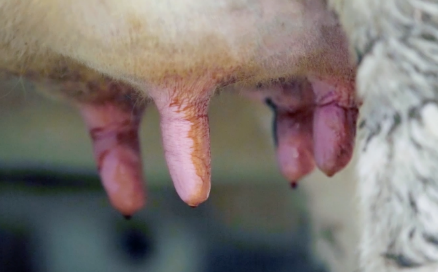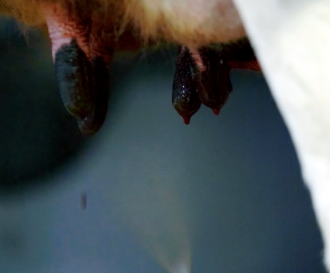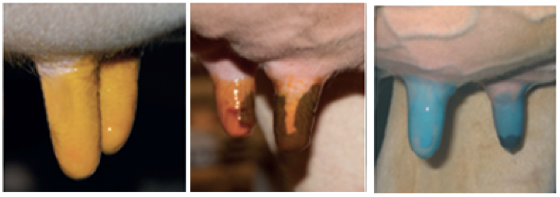Advances in not only the technology available in robot systems, but the understanding of how they can impact dairies, is resulting in fast development of the whole area of automation on farm. For a long time, the choice of going down the robot milking route was seen or assumed to be for “lifestyle” reasons however in most cases, it is for the reason of swapping “milking time”, for “observation time” with an ever closer attention being paid to areas of cow management including comfort, movement and heat detection, to name just a few.
Milk Hygiene and Quality
It is well known that to minimise clinical mastitis, teats and udders must be as clean as possible. In robot systems, cleaning teats before milking is an automatic process without a herdsman present making a visual check, meaning that issues can arise. A well set-up robot system offers the “repeatability” of a standard milking protocol which is good but also means that it cannot tell the difference between clean and dirty teats. This means that having a clean, hair-free udder with minimal opportunity for muck or straw etc… to be retained, can help with hygiene as well as attachment.
Evidence tells us that applying a post-milking teat dip or spray product while the teat orifice is still open, can help to reduce the chances of infection in the quarter. However, a study from Denmark showed only 50% of cows having their teat ends covered with spray from an automatic milking unit. In addition, in 18% of milking’s on automatic milking farms, teats were not covered with spray at all (Dohmen et al., 2010). Therefore, because all robotic milking systems employ a spray system for post-milking application, time spent on optimising post-milking spraying in robot stalls and the choice of product used, is highly important.
Common Teat Spray Issues


Set up and maintenance of the robot post milking spray system is paramount. Key areas of focus are:
-
Set-Up
-
Optimising the system for the specific farm is paramount. The repeatability of robot systems is good. Just make sure that each repeat is effective!
-
-
Cleaning
-
Depending on its location, the spray module can be very exposed to contamination and become ineffective very quickly, therefore regular checking and cleaning is essential
-
-
Maintenance
-
Despite teat spray products being relatively non-aggressive, continual use in robot systems can lead to wear of the nozzle. Checking spray pattern and replacing according to recommendations or when necessary, is crucial
-
Obviously paying very close attention to all areas of post-milking spray application is time well-spent but also using as high-quality a product as possible, can help to mitigate the risks of poor application.
The CID Lines Post Milking Spray Range for Robots
In recent editions, we looked at post dip needs. Here we will look at the distinct features that are needed for a product used through a robotic system in addition to all of the key features needed in a post-milking product, as well as the CID Lines range that is available to fit the bill.
Key Needs for Robot Post-Sprays
-
Fluidity: Consistent flow of product through the system with a uniform spray pattern produced
-
Viscosity: The ability to “cling” to the teat, forming a pooled droplet at the teat end whilst the orifice is closing post-milking
The CID Lines Range – Approved through all robot systems
Pre-Milking teat preparation
-
Kenopure Lactic acid-based pre-foam for use in pre-wash brush systems
Post-Milking Sprays

-
Kenolac SD Lactic acid-based dip & spray with fly repellent and sunscreen
-
Kenostart SD/Kenodin SD VMR registered (Kenostart), high viscosity, complex (pH neutral) iodine dip & spray with optimised emollient levels
-
Kenocidin SD/Kenomint SD VMR registered (Kenocidin), high viscosity, chlorhexidine-based dip & spray with Menthae arvensis
